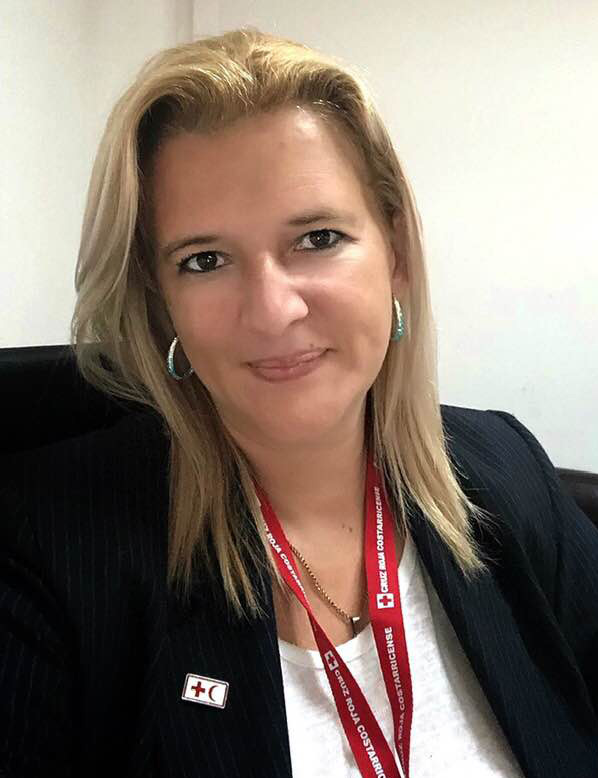Question#1 What was your company’s distinctive strategy for incorporating technology to meet UN Sustainable Development Goal?
Before thinking about a strategy, we note that innovation is a component of any organization’s success and very often it is less clear, how do you translate new innovative ideas into on-the-ground implementations? Part of the strategy is to mitigate the monetary barrier; there are all sorts of creative ways to find the resources needed, another effective approach is to do projects of different sizes. This generated a win-win, we reached more people and formed important partnerships locally and nationally. To generate impact internally, you need to understand and address real needs rather than insisting that they implement solutions that don’t really work for them. This means starting from the bottom up, identifying the best potential “partners” and addressing the challenges that prevent people on the ground from successful implementation.
Question#2 What challenges did you face while working on your project/initiative, and how did you overcome them?
While working on our project/initiative, we encountered three major challenges within the organization that impede innovation and result in substantial loss of time and resources invested in research and proposal development. Firstly, team members exhibited resistance to change and engaged in internal conflicts. Secondly, we lacked the operational capacity to effectively implement these innovations, lacking a solid plan, disciplined execution, and a strong team. Lastly, our leaders lacked an exponential vision, which hindered their willingness to experiment and implement new ideas.
Question#3 How did you involve local communities and stakeholders in your work, and what was their response?
The image of the National Society holds significant influence within the communities, enabling us to effortlessly engage them in active participation and project involvement. Our approach is rooted in their needs and interests, fostering trust as an essential foundation for belief in and shared commitment to our work. There is no magical formula for community involvement. As the saying goes, “Don’t view it as ‘the community.’ We are that community—each one of us belongs to it.” By comprehending the cultural and social dynamics of the groups we collaborate with, we adopt a resolute approach that amplifies alongside the advancements and outcomes of each field action.
Question#4 Which organizational skills and assets can be harnessed to provide its goods/services without negative environmental and social impacts?
Proficient writing skills, effective management of computer equipment, integration of green practices into our operations to ensure sustainable purchases, development of medium and long-term projects, efficient internal management, and continuous improvement processes have enabled us to optimize and maximize resources, considering the fact that our budget is zero.
Question#5 What is the role of businesses, governments, and civil society in achieving the SDGs, and how can they work together?
Progress on the SDGs can only be achieved through a collaborative effort spanning multiple sectors. The 2030 Agenda must be integrated into policies, strategies, and actions. Given the magnitude of the challenges and the urgency of the situation, it is imperative to take action and foster cooperation, establishing shared objectives. With the knowledge and expertise of each sector, we can contribute to the attainment of all the SDGs. We all have a vital and transformative role to fulfill. Companies and organizations are not static entities; they consist of individuals with names and surnames who are part of society. They interact with one another and the environment, consume resources, and have an impact through their habits.
Question#6 What impact has your project had, and what are your future goals?
Bioremediation has become an attractive and promising alternative to traditional techniques for the remediation of compounds that contaminate the environment. Our Objective: A descriptive study through a documentary review of the possibilities and limitations of this biotechnology in the treatment of contamination problems in rivers, basins and soils. As a result, bioremediation has proven to be cost effective and efficient in the removal of certain pollutants.
The monitoring and systematization of the application of bioremediation and its contribution to the fulfillment of several of the sustainable development objectives have generated a significant impact in the communities we have approached, achieving a considerable improvement in people’s health and environmental conditions.
Question#7 What advice do you have for individuals/organizations seeking to create positive change and contribute to the SDGs?
My advice is that once you know exactly what you want to achieve and why, you should determine the impacts of the change at different levels of the organization. Review the effect in each area and how it cascades down through the organizational structure to each individual. From home, you can perform many activities that can contribute to the 17 SDGs. All actions add up, show your result, replicate and implement your ideas and initiatives. Measure your impact, evaluate yourself, and convince with results.
Question#8 How would receiving this SDG Award help you improve your impact and scale your project?
Wow, it would definitely help to grow, to motivate and share what we do to continue adding people, to show that we do not need a high budget for small actions to generate a positive impact on every boy, girl, man, woman, regardless of gender, ethnicity, because we all deserve to breathe clean air, because we deserve the quality of life.






















